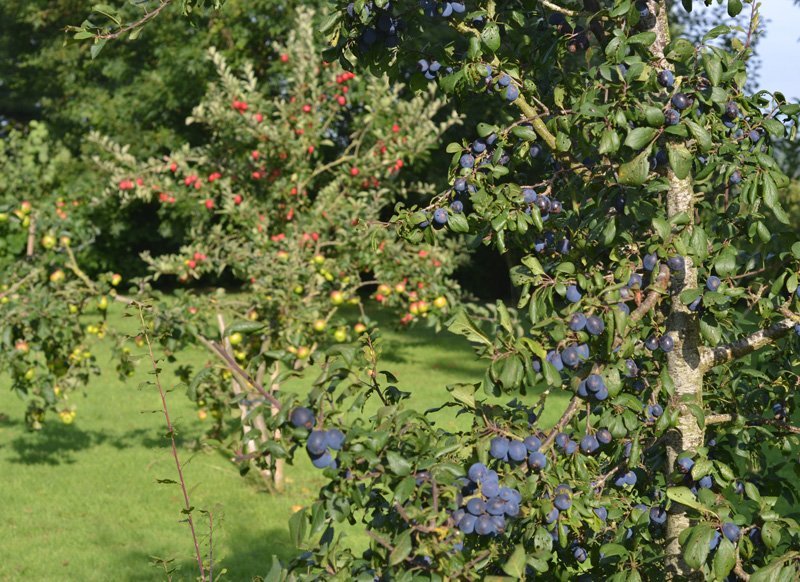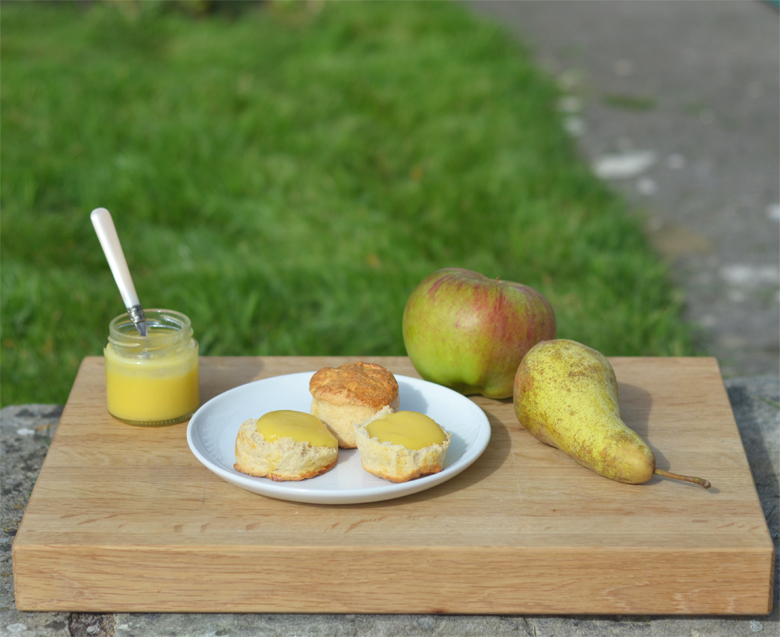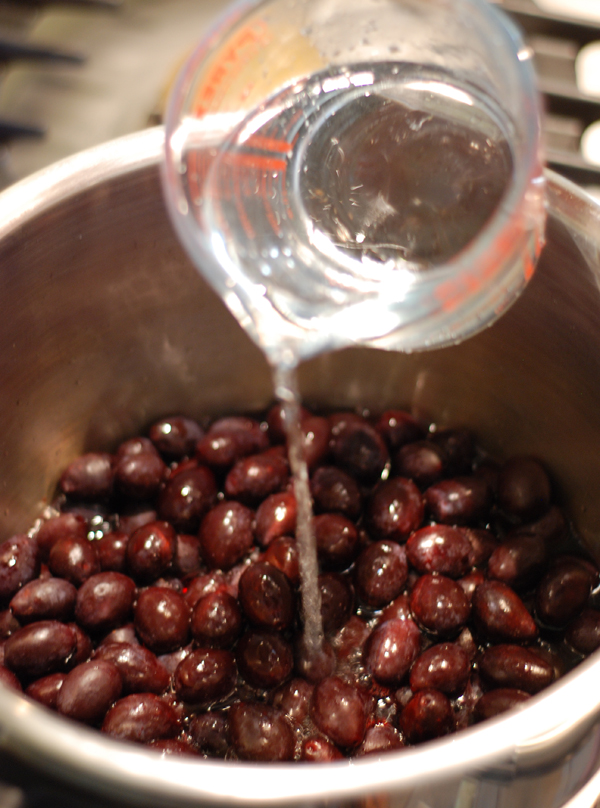 A glut of homegrown fruit, a gift from a neighbour or colourful displays on market stallsprompts the preserver to search for recipes. It’s a seasonal ritual and now more than ever the choice of recipes is prodigious. Apples are the stars of Autumn fruits, a staple ingredient in jam, jelly, chutney and curd.
A glut of homegrown fruit, a gift from a neighbour or colourful displays on market stallsprompts the preserver to search for recipes. It’s a seasonal ritual and now more than ever the choice of recipes is prodigious. Apples are the stars of Autumn fruits, a staple ingredient in jam, jelly, chutney and curd.Curd recipes
 Apples cooked into curd on their own can be a bit bland, but when other fruits are added they make exceptional curds. They are not strictly preserves as they do not have a long shelf life due to their ingredients and the temperature they reach before potting up.
Apples cooked into curd on their own can be a bit bland, but when other fruits are added they make exceptional curds. They are not strictly preserves as they do not have a long shelf life due to their ingredients and the temperature they reach before potting up.
This year a gift of Conference pears from Vale House Kitchen coincided with Bramley apples ready to pick at home. It got me thinking about combining the two into a curd. I made an Apple, Pear and Cider Curd, rich, smooth and well balanced. I gave a jar to Olivier Certain, head chef at the award winning Clavelshay Restaurant and I was flattered he used it in their tasting menu.
Jam recipes
I’m not immune to the knee jerk reaction of searching online or flipping through food magazines to find new recipes. Cooking apples, with their amazing setting properties feature frequently in jam recipes with low pectin fruit. Blackberries, pears and strawberries are popular choices, but they only work if the recipe has a balanced set of ingredients.
For an economical jam, combining apples with medium pectin fruit, for example raspberries or plums or high pectin damsons will spread the cost of the fruit without sacrificing flavour. Apples in these jams provide a soft back note and a full flavoured fruity jam. Getting from the list of ingredients to the finished jam is best if the apples and fruit are cooked separately before the sugar is added. This is essential as it means the fruit will be cooked ( especially relevant with stone or hard skinned fruit) and any pectin or acid will be released into the pan. Once the two fruits have been combined and the sugar added, a brief fast boil should set the jam. Bypassing these stages and just cooking the fruit and sugar together,( a method I’ve read about this year) does not save any time and produces a different product to the jam I make and teach.
This year with an abundance of apples and another gift of damsons from School House B&B, I made a Damson and Apple Jam. It set quickly and is one worth repeating next year.
Damson and Apple Jam
1kg cooking apples
1kg damsons
450ml water
granulated cane sugar
1. Peel, core and thinly slice the apples. Place the fruit in a large pan and add 150ml water. Bring the pan to the boil, cover the pan and reduce to a simmer until pulpy, about 10-15minutes.
Peel, core and thinly slice the apples. Place the fruit in a large pan and add 150ml water. Bring the pan to the boil, cover the pan and reduce to a simmer until pulpy, about 10-15minutes.
2. Place the damsons in a separate pan and add 300ml water. Cook gently until the fruit has burst, about 15 minutes. Allow to cool then remove the stones.
3. Combine the cooked apples and damsons. Weigh the mixture and weigh out 450g granulated cane sugar for every 450g fruit. Warm the sugar in an ovenproof bowl 120C for 20 minutes,
4. Pour the fruit mixture into a large preserving pan and dissolve the warmed sugar,
5. Bring to a rolling boil and maintain it for 5minutes. Test for a set using the flake or temperature test.
6. Once setting point is reached. Remove the pan from the heat and allow to cool for a few minutes. Remove any scum with a metal spoon. Pour the jam into glass jars and seal immediately with new twist top lids. Leave the jam upright and undisturbed to set.
Links
Clavelshay Restaurant
Vale House Kitchen
School House B&B
First Preserves recipe books
